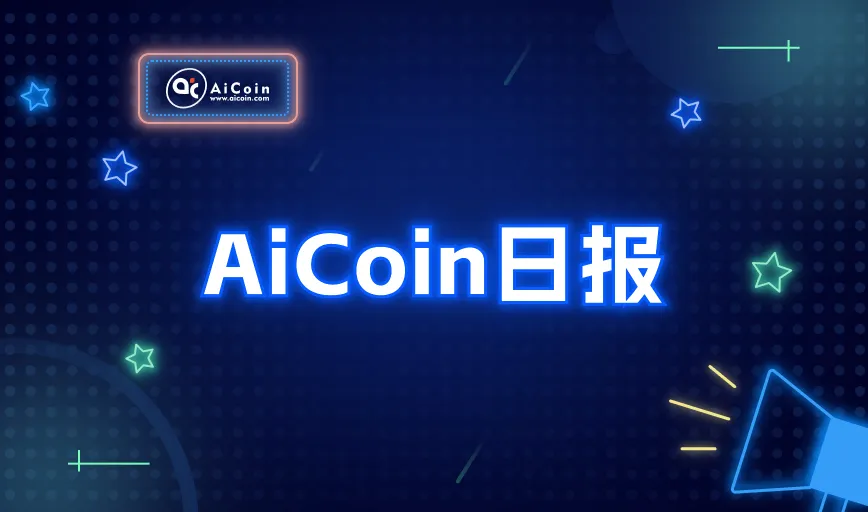The DeFi market is experiencing a long-awaited "veteran revival wave."
As of now, the total value locked (TVL) in the DeFi market has climbed to $197 billion, just a step away from its historical high of $206 billion. More critically, the leaders of this rebound are not newly emerging projects, but a group of "veterans" that once shone brightly during DeFi Summer.
From the earliest speculative demand to the current "old trees rejuvenating," the collective growth of the DeFi market is driven by accelerated institutional capital entry (RWA, compliant lending, 401k crypto investments), a resurgence in retail demand for on-chain yields during the bull market, and new use cases brought about by technological iterations. The return of veterans reflects market confidence and serves as a prelude to a new round of DeFi competition.
BlockBeats has compiled the main reasons for the recent surge in prices and TVL of DeFi "veteran players" such as Aave, Uniswap, Euler, Pendle, Fluid, and Spark.
AERO: A Violent Rebound Backed by Coinbase
Aerodrome Finance (AERO) is a decentralized exchange (DEX) launched in 2023 and deployed on the Base chain, operating with an automated market-making (AMM) model, featuring vote-lock governance and a robust liquidity incentive mechanism. It adopts a highly community-friendly design, with an anonymous team that has not accepted venture capital or private placement lock-ups, maximizing the alignment of interests with users. Within just 72 hours of its launch, it achieved a financial TVL exceeding $200 million, and by 2024, its total trading volume surpassed $1 billion, with the Slipstream feature contributing 85% of that. As of June 2025, AERO's cumulative trading volume has exceeded $100 billion, firmly establishing its core position in the Base DeFi ecosystem.
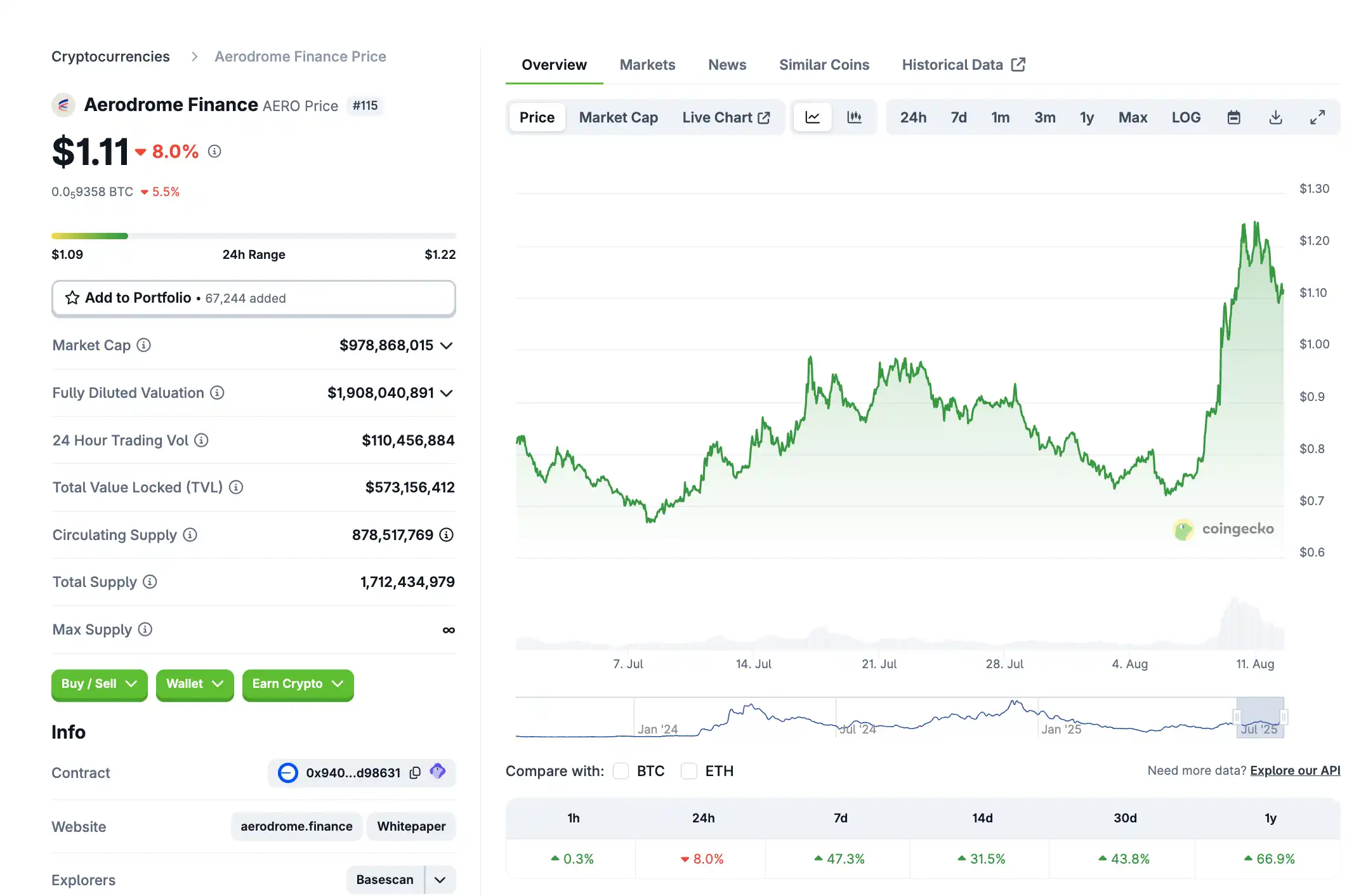
Recently, AERO has shown strong upward momentum: on August 9, spurred by news of Coinbase's local DEX feature launch, AERO rose for several consecutive days, reaching $1.23, with a 7-day increase of approximately 47%. Its current market capitalization is about $978 million, making it a popular project recently.
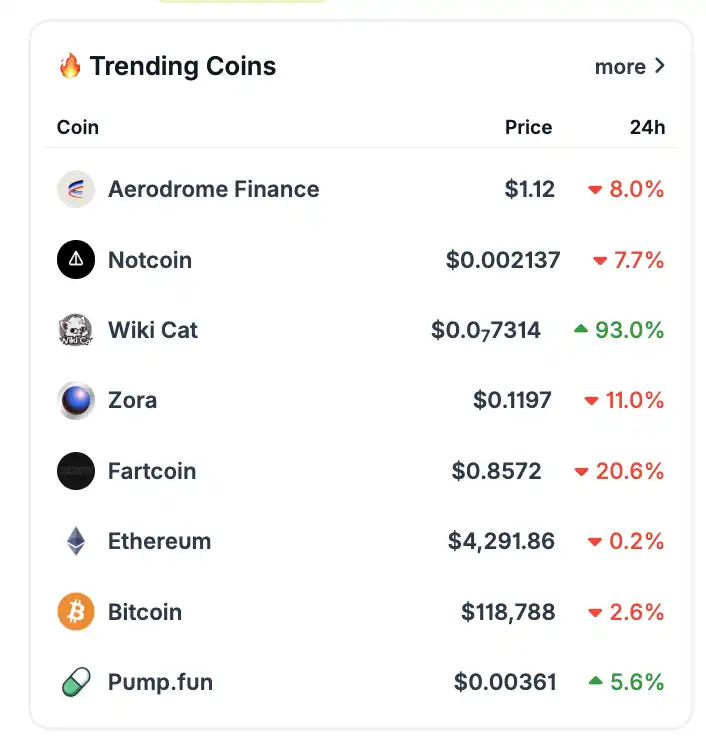
In addition to Coinbase integrating DEX trading for Base local assets, where Aerodrome became one of the first supported projects, AERO's price increase may also be attributed to the launch of the "Pool Launcher" tool, which allows projects to create liquidity pools and earn related trading fees, attracting more Base local projects to join the ecosystem.
Currently, Aerodrome's TVL is approximately $580 million, almost entirely from the Base chain. The 24-hour DEX trading volume is nearly $950 million, with a total trading volume over the past 30 days reaching $20.5 billion. In terms of revenue and investment, Aerodrome's annualized fee income is estimated at about $193 million, with approximately $15.85 million in revenue over the past 30 days, and cumulative incentive spending has reached $706 million, indicating a strong liquidity incentive orientation.
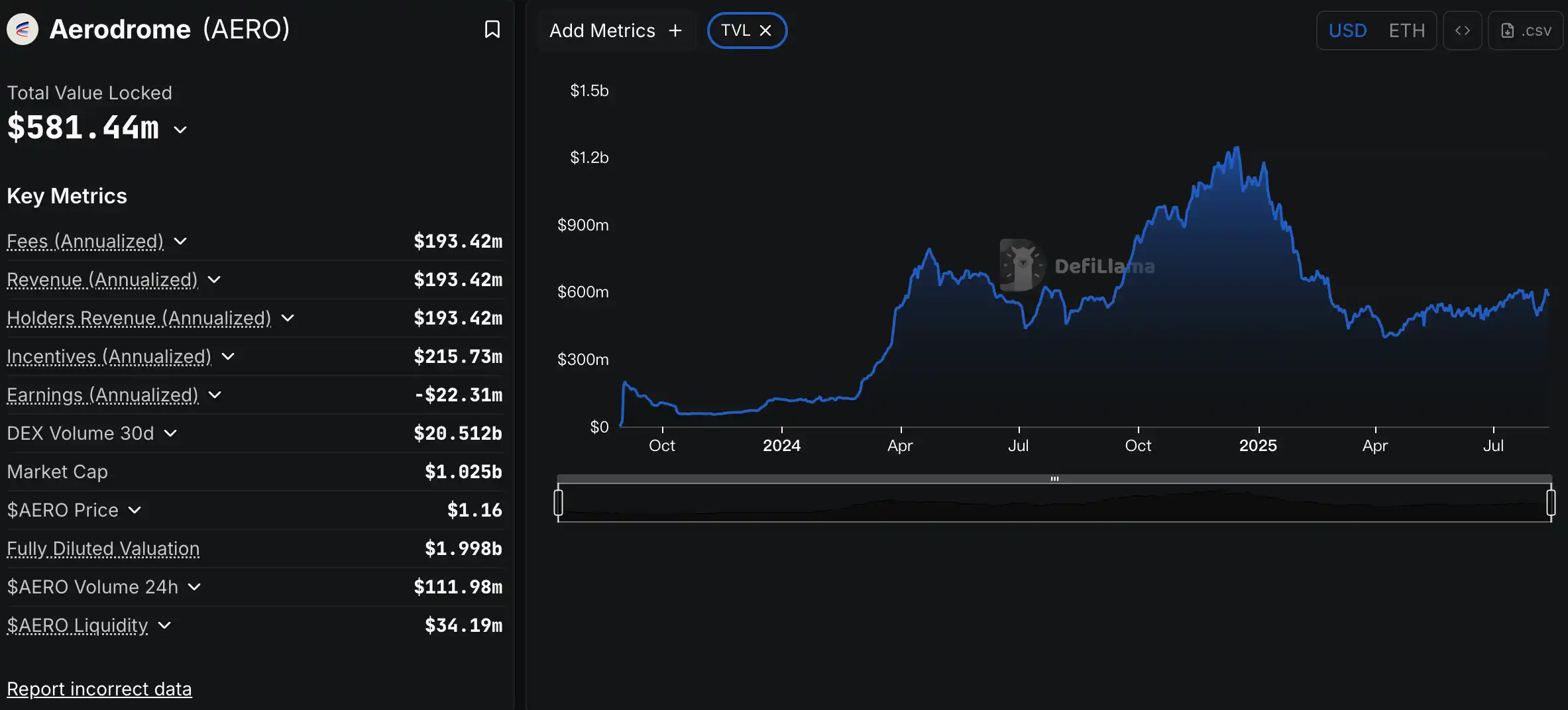
Currently, Aerodrome has established a leading trading and incentive mechanism on the Base chain, becoming a liquidity hub in DeFi. The integration with Coinbase has opened a window to a broader user base, serving as a catalyst for the concentration of capital and liquidity.
Although the upward trend is evident, high incentive spending and overheated technical indicators suggest caution against short-term adjustments. In the medium to long term, attention should be paid to whether its ecosystem expansion continues, whether cooperative projects are realized, and whether Coinbase continues to broaden its support, which will determine if it can return to its historical high ($2.32) or continue to break through.
Fluid's Ambition to Flip Uniswap
Fluid is a DeFi protocol that integrates DEX (decentralized trading), lending, and vault systems, achieving high capital efficiency and liquidity reuse through its unique Liquidity Layer. Launched on Instadapp and reintroduced in 2023, Fluid allows assets to switch purposes freely within the liquidity layer without multiple lock-ups, significantly reducing fragmentation costs and enhancing yields. Its Smart Debt and Smart Collateral models provide better capital efficiency for liquidity providers and debtors.
Recently, Fluid has become one of the focal points in the DeFi market: on August 4, Fluid's daily on-chain trading volume briefly surpassed Uniswap, reaching approximately $1.5 billion, driving the price of $FLUID up 14.4% on that day. As of now, Fluid has risen to $7.38, with a 7-day increase of 36.1% and a 30-day increase of 51%.
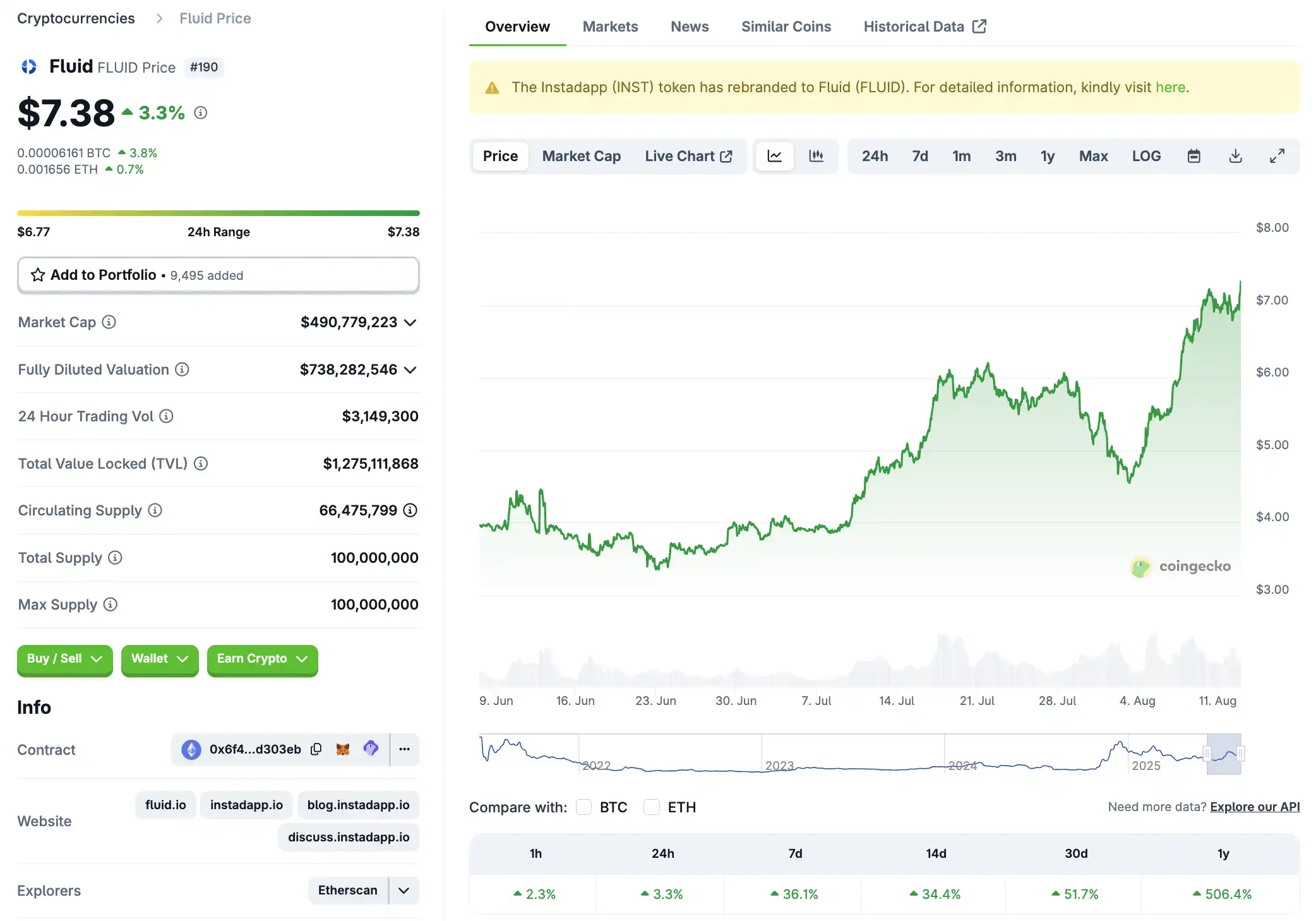
The reasons for Fluid's price increase may include the following four points:
Liquidity Layer Architecture Breaks Fragmentation
Fluid is launching on chains like Arbitrum and Solana, introducing a lighter Lite version while supporting DEX v2 upgrades, which helps further improve yields and user coverage. The Liquidity Layer allows for liquidity sharing, where assets can be locked once to meet multiple usage needs, which is the core driving force behind its rapid capital and trading absorption.Rapidly Increasing Market Share
In the short term, Fluid has surpassed Uniswap, capturing over half of the stablecoin trading market, directly strengthening its ecosystem and sentiment-driven growth.Trader Confidence Rebounds
The daily trading volume on DEX has reached a historical high, with token prices rising in the short term, indicating an increased market recognition of the Fluid model and affirmation of liquidity allocation efficiency.Long-term Positive Expectations from Buyback Mechanism
The official announcement states that a buyback will be initiated when annualized revenue reaches $10 million, providing medium to long-term support for token value and attracting investors to position themselves during low-price phases.
The platform's cumulative trading volume has exceeded $7.9–$8 billion, with a monthly TVL growth rate of approximately 27%, totaling about $838 million, showing a strong capital growth trend. Since 2025, Fluid's deposits have grown nearly 40%, exceeding $1.4 billion, and it has begun multi-chain layouts (such as Arbitrum and Solana) and plans for DEX Lite. As of August 3, Fluid's market share in the stablecoin swap market on Ethereum, Base, Arbitrum, and Polygon reached 55.5%, far exceeding Uniswap (25.7%) and Curve (13.4%).
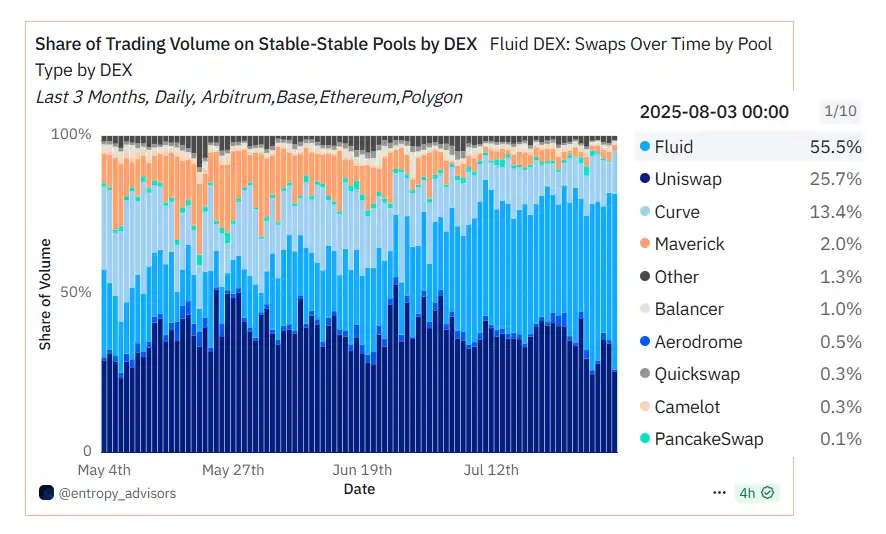
In summary, Fluid has become a "new force" in DeFi: through its unique Liquidity Layer, strong trading data, and multi-chain expansion strategy, it has quickly brought the platform back to the center stage and set a new benchmark for stablecoin trading in DeFi. While its short-term performance is impressive, several risk points still need attention: whether FLUID will experience short-term adjustments remains to be seen; the realization of its ecosystem and user stickiness, and whether subsequent projects can truly build on the Fluid liquidity layer are key to sustained momentum. If the subsequent DEX v2 and Lite versions are successfully launched and drive revenue past critical thresholds, it could not only initiate the buyback mechanism but also further enhance user stickiness and market valuation, helping Fluid become a new benchmark for stablecoin trading.
Uniswap v4 TVL Breaks $1 Billion Again
Uniswap is a "veteran" in the DeFi world, with its v4 version officially launched in early 2025, covering 12 chains including Ethereum, Arbitrum, Base, Polygon, BNB Chain, and Unichain. The new "Hooks" feature allows liquidity pools to have dynamic fee rates, on-chain limit orders, TWAP, and other customizable logic, while the Singleton architecture and Flash Accounting technology reduce gas costs by over 99%. v4 retains the capital efficiency advantages of v3 while enhancing flexibility and programmability, becoming an important part of DeFi's innovative infrastructure.
Recently, Uniswap has shown stable performance: as of now, the price of UNI is $11.27, having increased approximately 31% over the past 30 days, with its market capitalization back in the $670 million range.
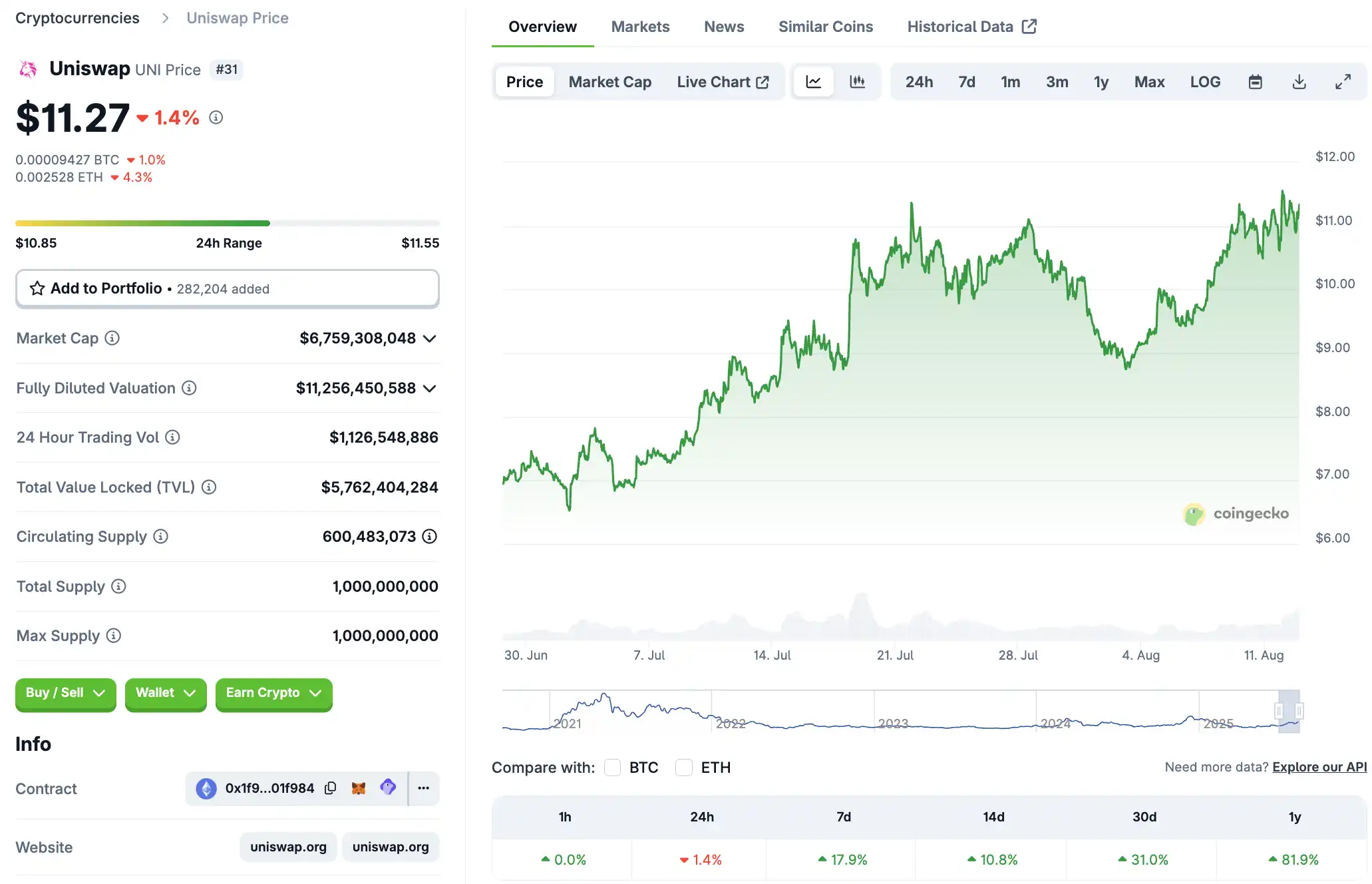
The reasons for UNI's price increase include:
Strong TVL Rebound
v4 has rapidly surpassed $1 billion in TVL, providing solid emotional support for the UNI price and highlighting the warming trend in the DeFi ecosystem.Hooks Innovation Attracts Capital
Programmable liquidity strategies have led to the rapid rise of various strategy projects (such as Bunni and EulerSwap), driving user participation and operational depth.Unichain's Expanding Role
The addition of new networks brings lower costs and efficient experiences, creating new growth engines for Uniswap and further increasing activity.Technological Iteration and Institutional Upgrades
v4 introduces smart wallet support, cross-chain integration (such as Hyperbridge and LayerZero), and over 640 million swap transactions, building a more comprehensive trading infrastructure.
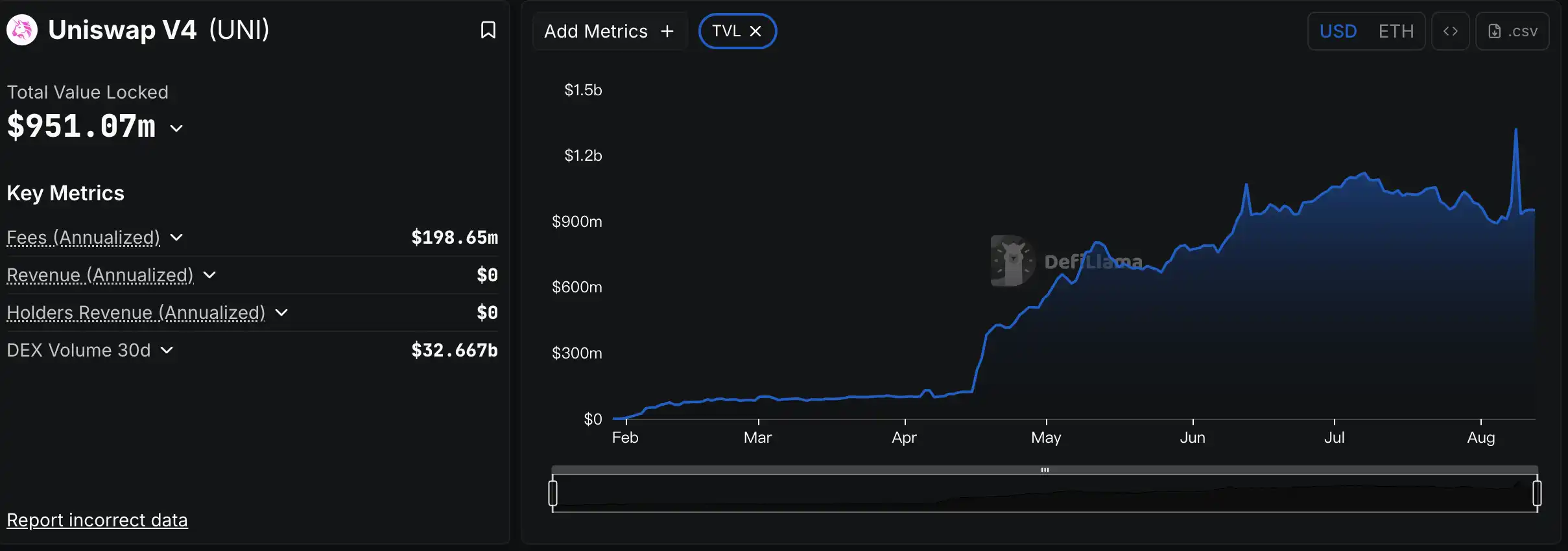
Currently, Uniswap v4 TVL has surpassed the $1 billion milestone. In terms of cumulative trading volume, Uniswap has exceeded $11 billion, making it a central hub for DeFi liquidity. Among this, Unichain accounts for about 75% of the daily trading volume, while Ethereum accounts for approximately 15–20%. Regarding the deployment of Hooks, over 2,500 Hook liquidity pools have gone live, with both Bunni and EulerSwap having cumulative trading volumes exceeding $1 billion.
Despite Fluid shining brightly in the market, Uniswap remains a robust powerhouse: its v4 version continues to solidify its core position in DeFi through technological innovation and ecosystem expansion. The rapid growth of TVL and the rich application of Hooks are important foundations for its revival. However, technical indicators such as RSI are relatively high, and it may face some profit-taking pressure in the short term.
Whether it can continue to rise depends on: whether the Hook strategy pools can bring new growth; whether cross-chain integration deepens ecosystem cooperation; and whether Unichain can maintain its cost advantages and attractiveness, with the potential to challenge the $13–$14 range.
Euler: A "Phoenix Rising" After the Hack
Euler Finance is a modular lending protocol on Ethereum, known for its risk layering, flexible asset permissions, and high capital efficiency. It supports the integration of any ERC-20 asset and manages leveraged positions with complex liquidation protection mechanisms. After being severely impacted by a hacking incident in 2024, the project quickly rebooted and regained "trust," becoming one of the core players in the resurgence of DeFi lending.
Recently, $EUL reached an all-time high, with prices briefly surpassing $15, representing an increase of over 950% from the lows at the end of 2023. Its market capitalization is also approaching $300 million. Although there has been a slight pullback, the current price stabilizes in the $11.8–$13 range.
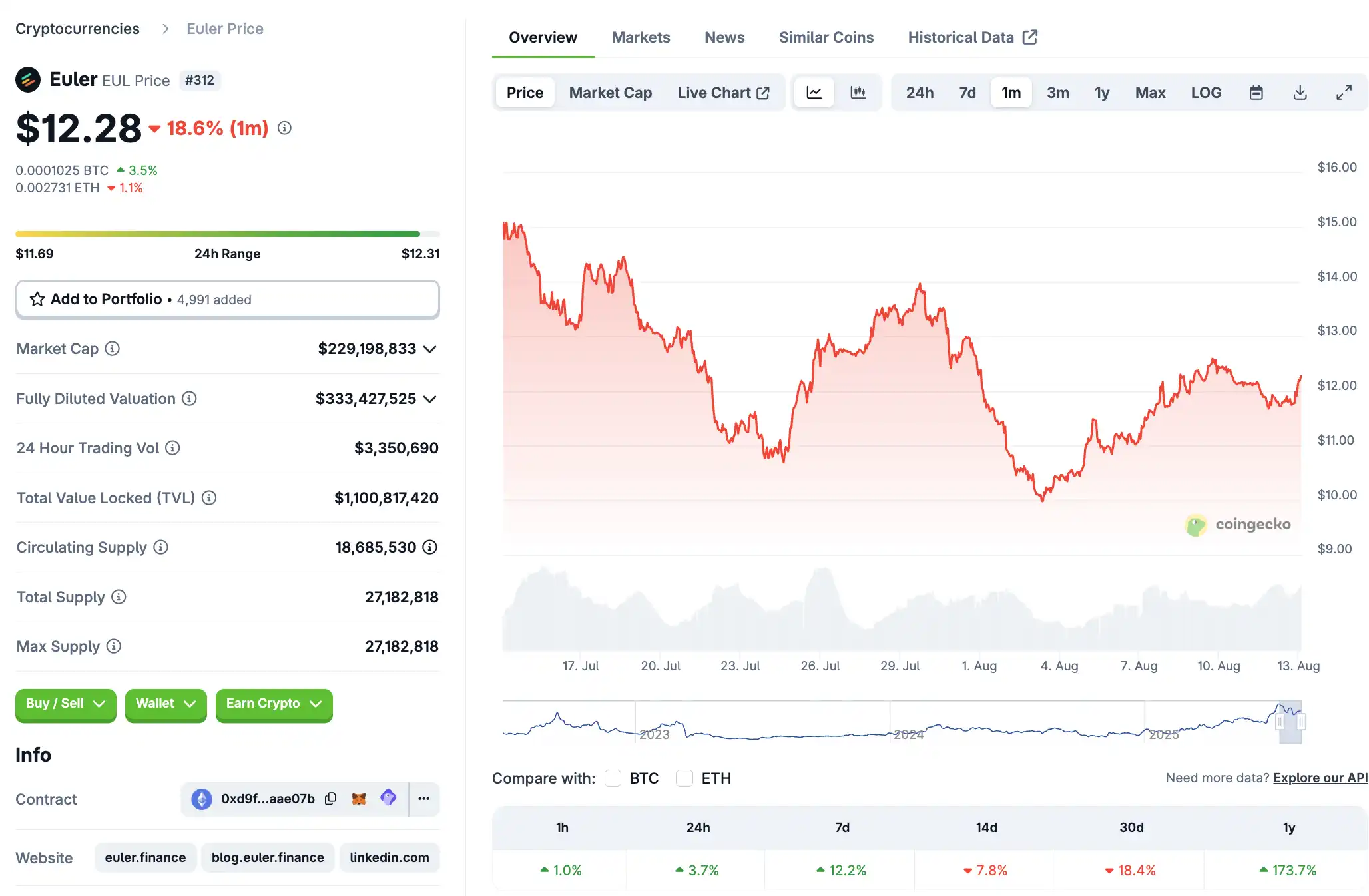
The reasons for Euler's price increase include:
Rising from the Ashes
Euler quickly rebooted after the hacking incident, winning back community trust and capital inflow, which is a significant foundation for its substantial rebound.TVL and Lending Depth Rebound
TVL has seen exceptional growth, and active loans have surged, reflecting strong user demand for borrowing and a revival of protocol momentum.EulerSwap Complements the Ecosystem
After launching its native DEX, Euler has built a self-circulating liquidity path, enabling a closed-loop interaction between staking, lending, and trading.Support from Mainstream Platforms
Recent news indicates that Coinbase will support EUL, which led to a price increase of about 5.7% on the day of the announcement, reflecting rising recognition from the capital market.
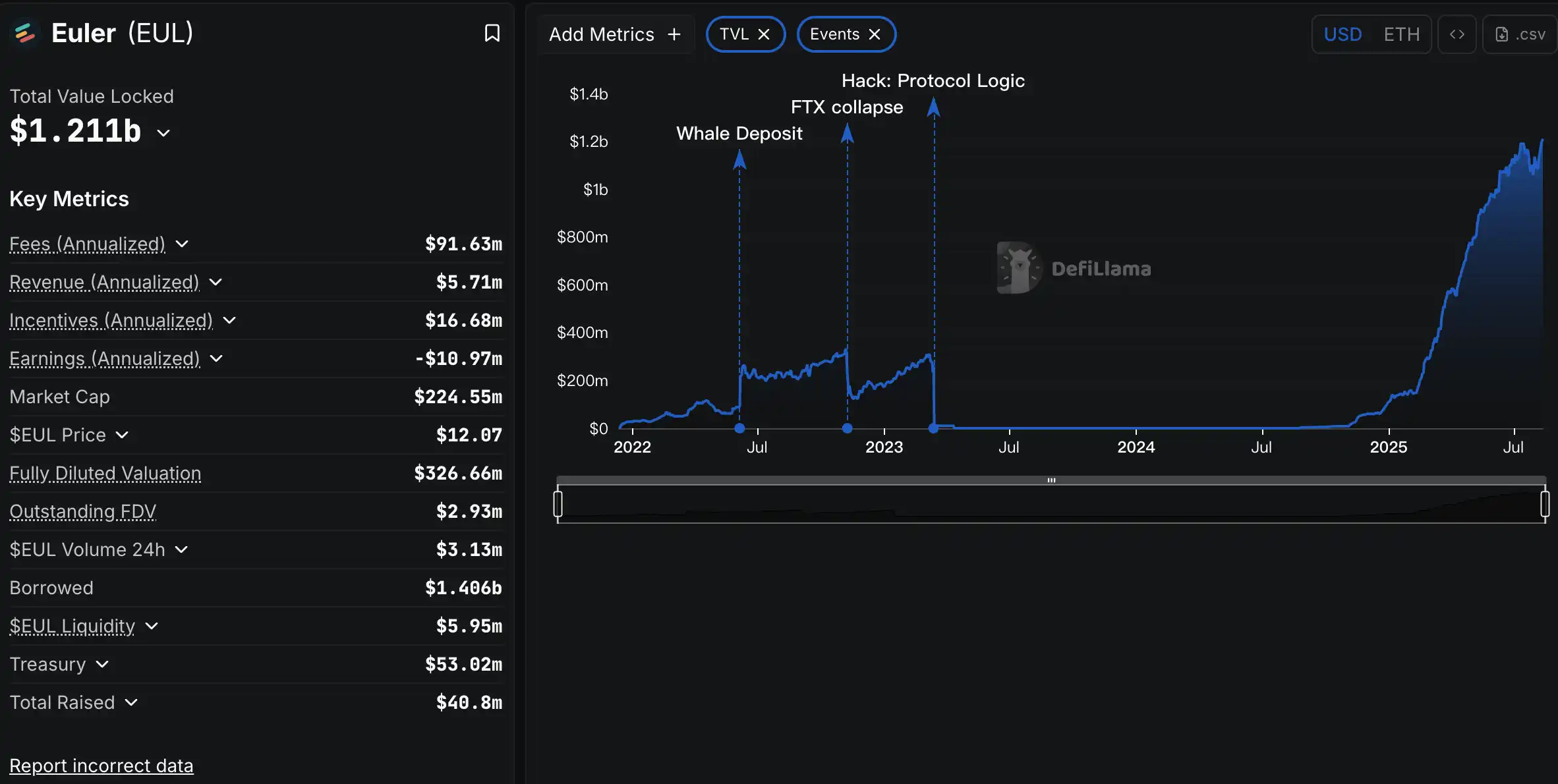
Latest data shows that Euler's TVL has reached $1.2 billion, having largely overcome the impacts and challenges following the hacking incident. Euler launched its native DEX—EulerSwap, which has seen cumulative trading volume exceed $1 billion since its launch in May. Loan activity: the amount of active loans has recently surpassed $1 billion, a significant increase from only about $240,000 at the end of 2024.
Euler's recovery is a classic "phoenix rising" story: from the predicament after the hack to a rapid restart, explosive TVL growth, product innovation, and gradual recovery of market capitalization and attention, showcasing the resilience of old DeFi projects in terms of trust and governance.
However, it is worth noting: the pullback pressure after high prices; and whether EulerSwap can maintain trading depth and whether the range of lending products will expand, which will determine its ability to sustain growth; whether more capital platforms will continue to support it, such as deeper support from Coinbase and more CEX listings, will enhance liquidity and market capitalization foundations. If Euler can indeed maintain TVL growth, loan activity, and the momentum of DEX construction, it is expected to return to a higher valuation range, continuing to write the classic "old trees rejuvenating" chapter.
Pendle: TVL and Price Surge Driven by Boros
Pendle is a DeFi protocol that allows users to "trade future yields," with its core mechanism splitting any yield-bearing asset into "Yield Tokens" and "Principal Tokens," enabling users to freely trade future earnings. Pendle V3 introduced the Boros platform, creating advanced yield trading tools and becoming one of the core infrastructures for yield trading.
Pendle has recently performed impressively: the price briefly approached $6, with a weekly increase of up to 46%, far exceeding the overall market trend.

The reasons for Pendle's price increase include:
Launch of the Yield Trading Platform Boros Engine
After Boros was launched, the BTC/ETH funding rates were converted into tradable assets (Yield Units), rapidly increasing user participation and capital inflow.Cross-Protocol Integration Mechanism Optimizing Capital Efficiency
Collaboration with Ethena, Aave, and Boros across ecosystems has made Pendle a hub for efficient yield strategies, with its PT-USDe strategy driving capital volume increases.TVL and Yield Growth Boosting Confidence
Record high TVL and surging income provide strong support for the token and enhance market sentiment.
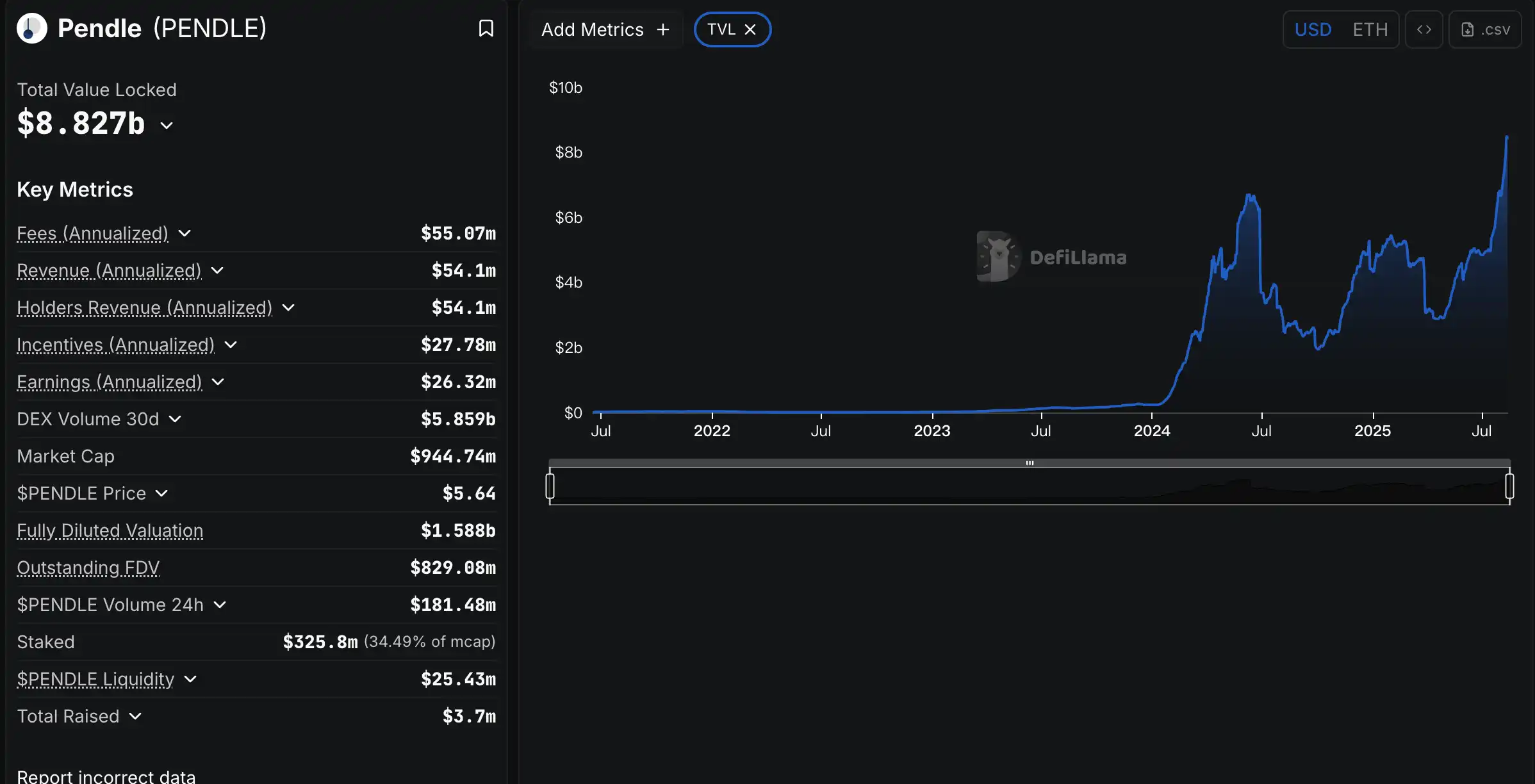
In core data, Pendle's TVL reached a historical high of $8.8 billion, primarily driven by the capital explosion from the Boros platform. In the first two days after launch, it attracted over $1.85 million in BTC and ETH deposits, and the number of active addresses for Pendle on Arbitrum doubled, attracting on-chain and institutional attention.
At the same time, protocol integration drives liquidity explosion. About 60% of the TVL comes from the USDe strategy (such as PT-USDe generating leverage and liquidity on Aave), creating a strong "yield-loop" asset circulation mechanism.
Pendle is becoming a new hotspot in DeFi due to its unique yield trading mechanism and protocol integration strategy: the Boros platform injects strong momentum, leading to simultaneous explosions in TVL and price. However, caution is needed regarding short-term technical pullback risks and the concentration risks brought by USDe exclusivity. If Pendle can continue to expand the assets supported by Boros (such as staking yields and government bond yields) and promote overall protocol governance and deep ecosystem integration, it has great potential to challenge the $7–$8 range, moving towards a truly "new chapter for old projects."
Lending King Crowned Again, Aave Gradually Institutionalized
Aave is a top lending protocol in the DeFi world, known for its non-custodial, modular design and cross-chain support. Its innovations, including the GHO stablecoin, Umbrella security mechanism, and Aave Arc/Horizon, further solidify its core position in the DeFi liquidity layer.
Recently, AAVE has performed impressively: in mid-July, the price surged to a high of $330, with a 7-day increase of about 24%. Although there is short-term pullback pressure at high market prices, the overall trend remains strong.
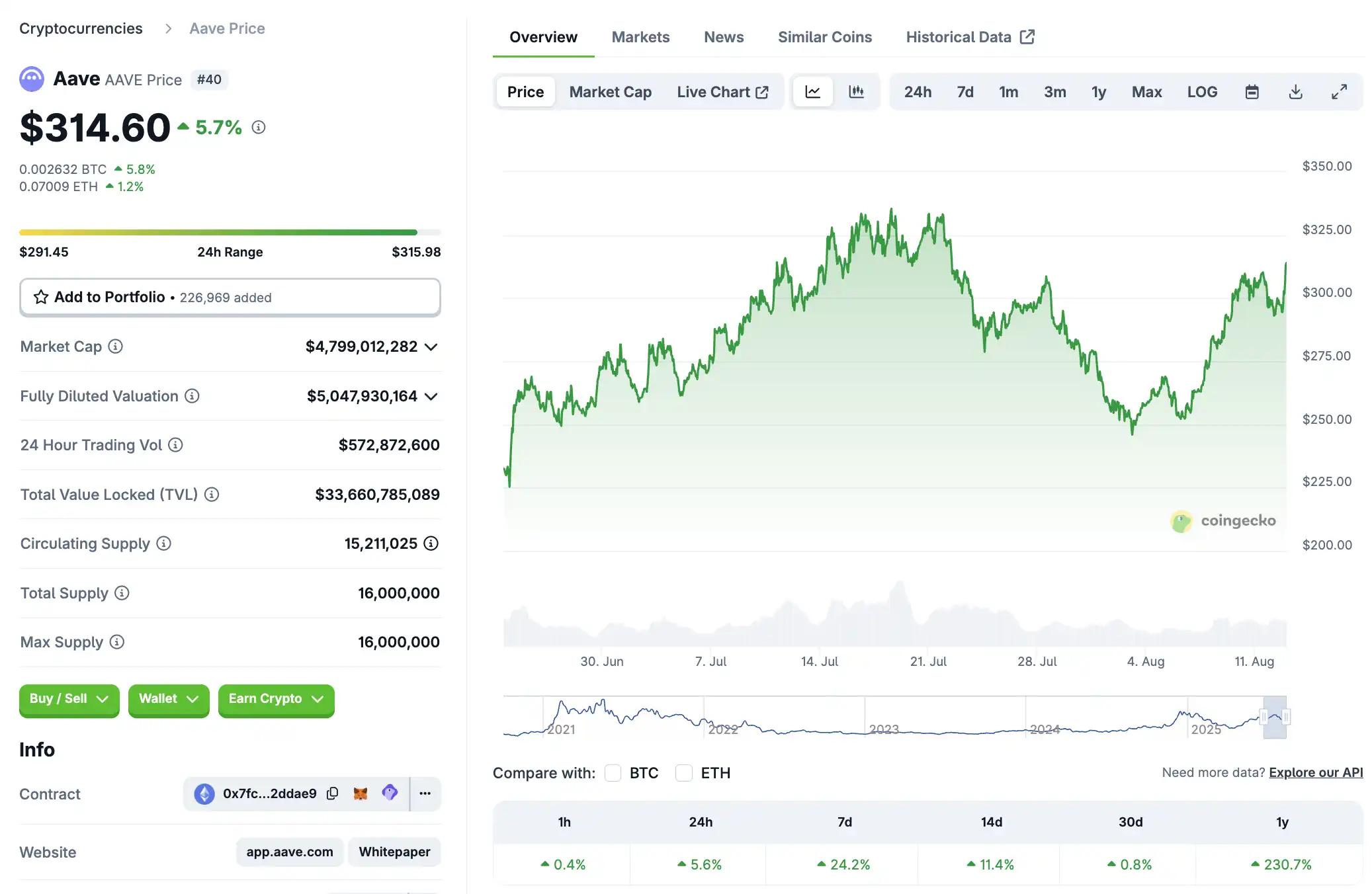
The reasons for Aave's price increase include:
Capital Inflow and Leading TVL
Aave remains dominant in the lending market, with new users and capital continuously flowing in, providing a solid foundation for market confidence.Enhanced Value Recognition of Stablecoin GHO
The cross-chain expansion of GHO, along with mechanisms like sGHO and anti-GHO, brings multi-layered yield incentives to holders, enhancing ecosystem stickiness.Institutional Pathways Continuously Materializing
Horizon, Arc, and KYC compliance mechanisms make Aave an important entry point for institutional-level DeFi lending.
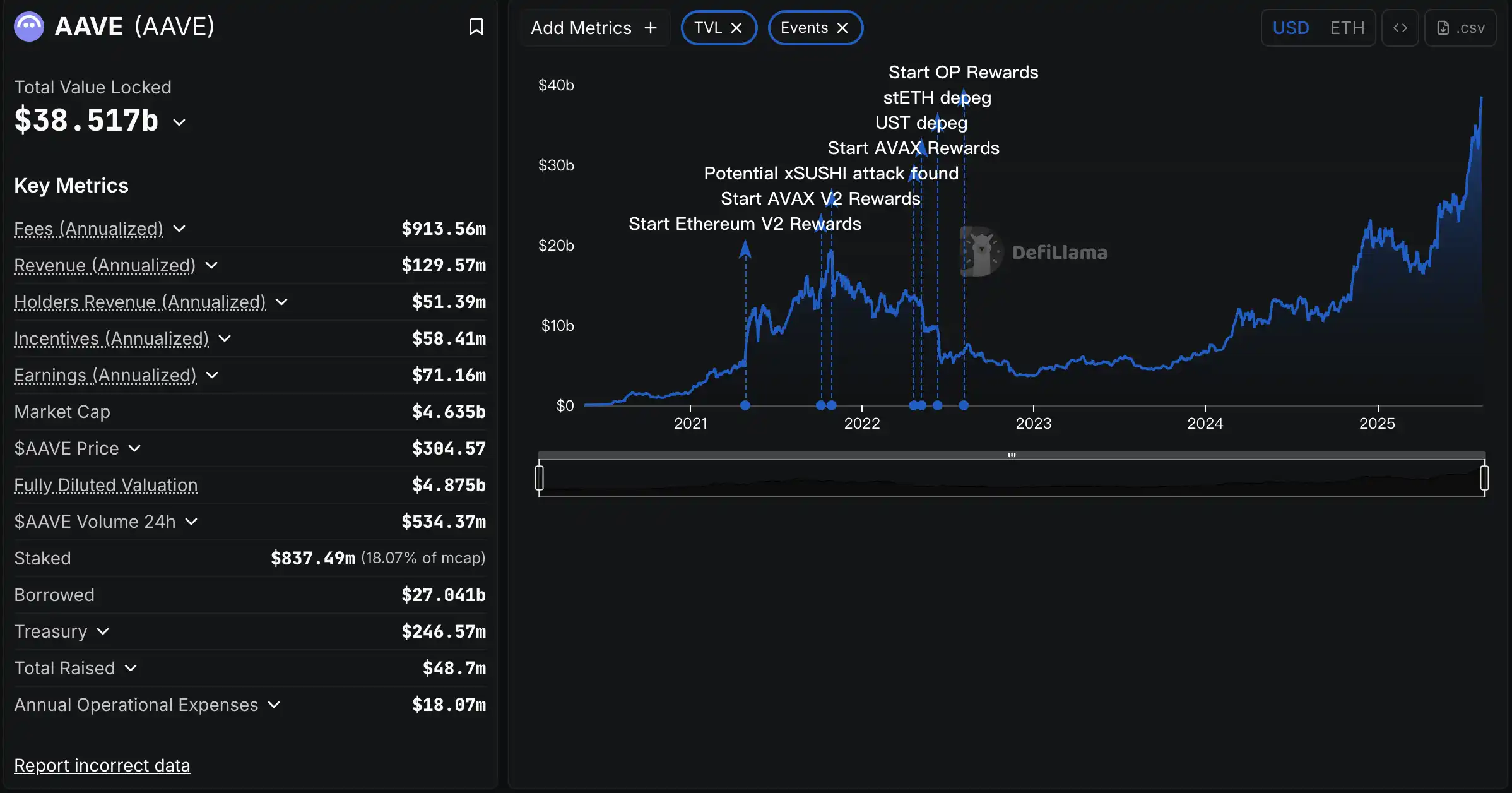
In other core data, Aave's TVL currently stands at $38.04 billion, a 52% increase since the beginning of the year, accounting for nearly a quarter of the total DeFi TVL, dominating the lending market. The issuance of its native stablecoin GHO has reached $312 million, and the cross-chain expansion of GHO on Arbitrum and Base promotes revenue growth, with AAVE achieving a return rate of 22.97% in the recent rebalance period.
In terms of specific institutional collaborations, Aave has launched the Horizon project to promote RWA and institutional usage pathways; partnered with Plasma to launch a blockchain fund for institutions; and Aave DAO has approved a white-label solution for the Kraken Ink chain.
As a "veteran" in the DeFi lending field, Aave remains "old but strong": its TVL and deposit sizes continue to set records, the functionality of GHO continues to expand, and institutional pathways are steadily advancing, all injecting strong momentum into its revival. However, the high price of AAVE faces pullback pressure, and technical indicators such as RSI are nearing overbought levels, suggesting a potential need for adjustment in the short term. Whether it can continue to lead the DeFi lending space in the future will depend on the progress of Aave V4's launch, the effectiveness of RWA channel implementations, and regulatory trends.
Spark: A Sword from MakerDAO
Spark Protocol (referred to as Spark) has evolved from MakerDAO and is now part of the Sky ecosystem. It is a high-level on-chain capital allocator dedicated to efficiently deploying hundreds of millions of dollars in stablecoin capital into DeFi, CeFi, and RWA (real-world assets). Its core products include SparkLend (lending), Spark Savings (yield generation), and Spark Liquidity Layer (cross-chain liquidity allocation), among others.
Since the official airdrop of the SPK token on June 17, 2025, and its initial listing, the market performance has been exceptionally eye-catching: the original TGE issuance price was approximately $0.065. In the short term, the SPK price experienced significant fluctuations—falling to a low of less than half the issuance price (around $0.03), but then rebounding strongly, reaching an all-time high of $0.18 on July 23, representing an increase of over 400%. The current price stabilizes in the $0.12–$0.13 range, with a market capitalization nearing $190 million and a 24-hour trading volume climbing to nearly $450 million.
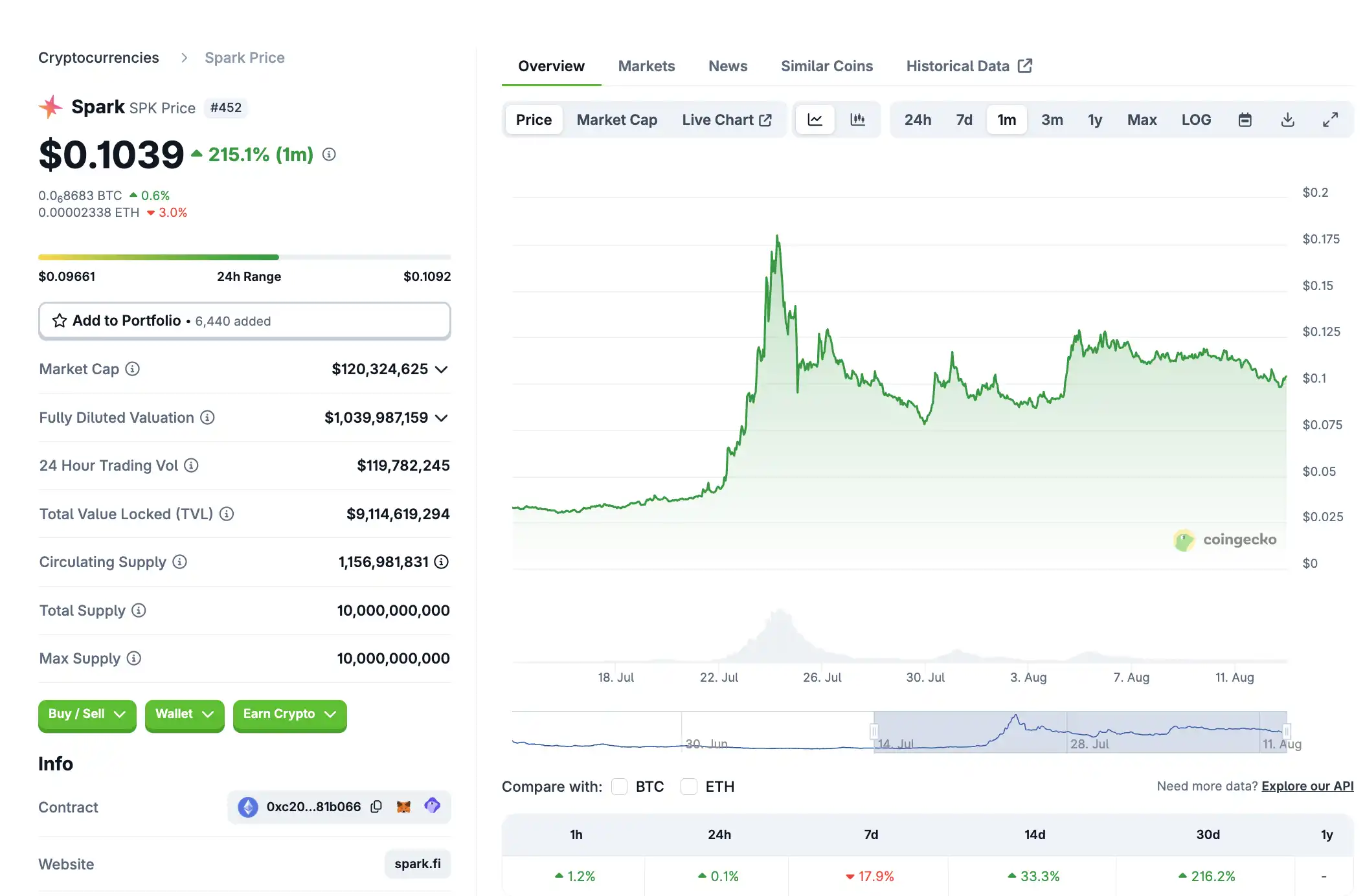
The main driving factors behind the rise of the SPK token may include the following four:
TVL Explosion Boosts Market Sentiment
Since April, Spark's TVL has surged by 250%, and this capital injection directly boosts market confidence, causing the SPK price to rebound rapidly and set a new ATH.Airdrop and Listing Stimulate Trading
Spark launched with a large-scale airdrop and listing on mainstream exchanges (such as Binance), establishing favorable mechanisms that heightened initial market attention and price volatility.Top-tier Capital and Technical Endorsement
Backed by the $6.5 billion stablecoin reserve of the Sky (formerly MakerDAO) platform, along with a transparent mechanism as the core of capital deployment, Spark is endowed with a strong stable foundation.Completeness of Product Structure
Spark has a product matrix covering yield generation, lending, and cross-chain liquidity, fully connecting user needs through SparkLend, Savings, and SLL.
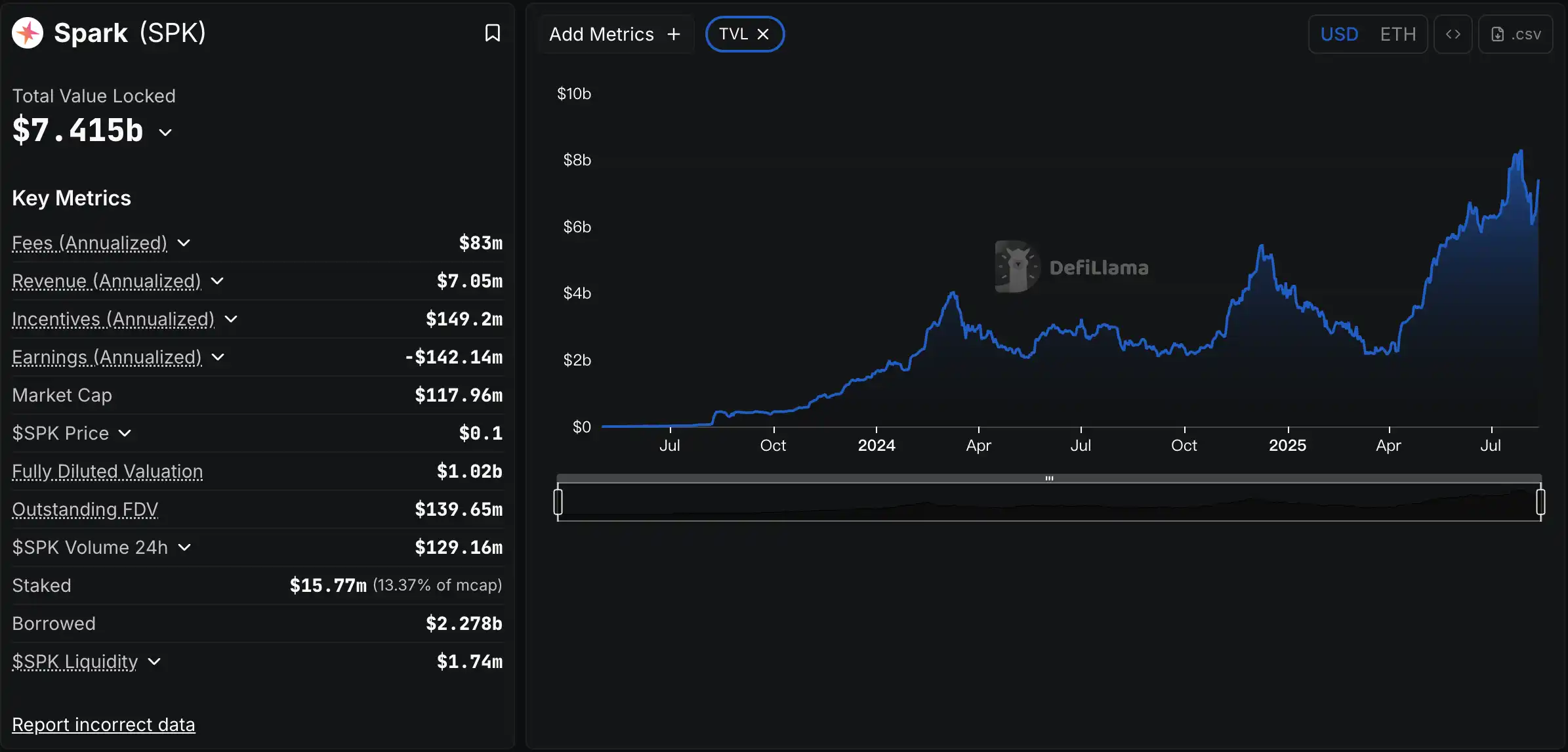
As of the time of writing, Spark's total TVL has reached $7.4 billion. Previously, in July, the TVL peaked at $8.1 billion, ranking as the sixth-largest platform in DeFi, with SparkLend managing approximately $4.7 billion and SLL managing about $3.4 billion. Spark is rapidly reshaping the standards for stablecoins and capital efficiency in DeFi, with the resonance of TVL explosion, airdrop sentiment, and Sky endorsement allowing SPK to achieve a legendary return of "old projects reborn" in a short time.
However, at the same time, high volatility and initial cash-out pressure remain, with prices currently having retraced by 30–40%. In the short term, caution is needed for market adjustments. Whether it can continue to strengthen will depend on the Spark ecosystem's ability to continue expanding (such as CeFi channels and RWA integration), governance activity, and the loyalty of SPK holders.
免责声明:本文章仅代表作者个人观点,不代表本平台的立场和观点。本文章仅供信息分享,不构成对任何人的任何投资建议。用户与作者之间的任何争议,与本平台无关。如网页中刊载的文章或图片涉及侵权,请提供相关的权利证明和身份证明发送邮件到support@aicoin.com,本平台相关工作人员将会进行核查。

